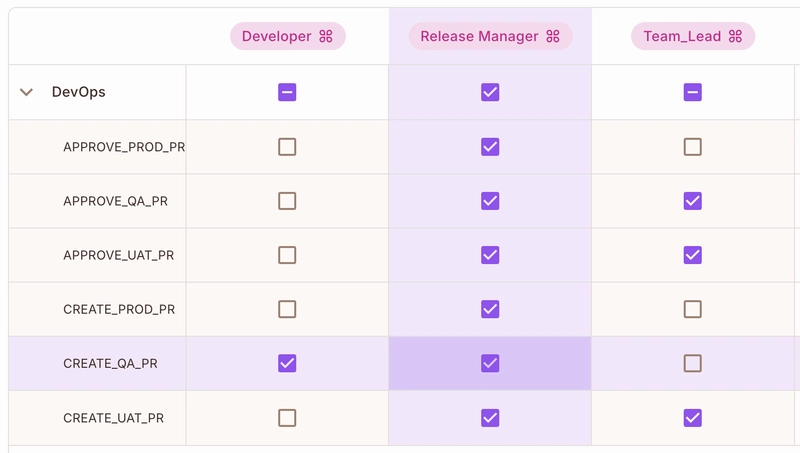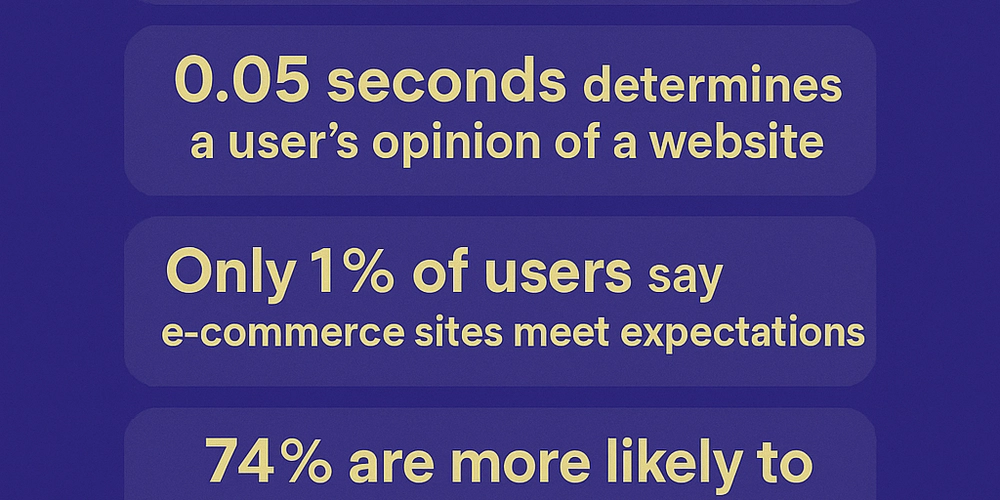How to Implement Hexagonal Architecture in Spring Boot?
Hexagonal architecture, also known as Ports and Adapters architecture, is a design pattern that promotes the separation of concerns in application development. It allows for a better organization of code by isolating the core logic from external elements like databases, user interfaces, and frameworks. In this article, we'll explore how to implement hexagonal architecture using Spring Boot, providing you with a comprehensive understanding and practical examples. What is Hexagonal Architecture? At its core, hexagonal architecture emphasizes the importance of an application's domain model while minimizing direct dependencies on external components. The architecture consists of a central domain that interacts with various adapters through defined ports. This setup enables easy testing and enhances adaptability with external sources. Why Use Hexagonal Architecture? Maintainability: By separating concerns, your code becomes easier to maintain and modify. Testability: Testing the core application logic is straightforward because dependencies are managed through interfaces. Flexibility: Changing an external component (like a database or a UI framework) does not affect the core application logic. Setting Up a Spring Boot Application Let’s dive into the implementation by setting up a Spring Boot application that follows hexagonal architecture principles. You'll need to have Spring Initializr to bootstrap your Spring Boot project. Choose dependencies like Spring Web, Spring Data JPA, and H2 Database to get started. Project Structure Here’s a suggested project structure for your hexagonal architecture: /src └── main ├── java │ └── com │ └── example │ └── hexagonal │ ├── application │ │ ├── ports │ │ │ └── UserService.java │ │ └── services │ │ └── UserServiceImpl.java │ ├── domain │ │ └── User.java │ ├── infrastructure │ │ ├── adapters │ │ │ └── UserController.java │ │ └── repositories │ │ └── UserRepository.java │ └── HexagonalApplication.java Core Domain Let's define a simple domain model for a User entity. Create a file named User.java in the domain package: package com.example.hexagonal.domain; public class User { private Long id; private String name; private String email; // Constructors, getters, and setters omitted for brevity. } Application Layer Next, we’ll define the application's business rules and interfaces using ports. Create a file named UserService.java in the ports package: package com.example.hexagonal.application.ports; import com.example.hexagonal.domain.User; import java.util.List; public interface UserService { List getAllUsers(); User getUserById(Long id); User createUser(User user); } Then, implement this interface in UserServiceImpl.java: package com.example.hexagonal.application.services; import com.example.hexagonal.application.ports.UserService; import com.example.hexagonal.domain.User; import com.example.hexagonal.infrastructure.repositories.UserRepository; import org.springframework.beans.factory.annotation.Autowired; import org.springframework.stereotype.Service; import java.util.List; @Service public class UserServiceImpl implements UserService { private final UserRepository userRepository; @Autowired public UserServiceImpl(UserRepository userRepository) { this.userRepository = userRepository; } @Override public List getAllUsers() { return userRepository.findAll(); } @Override public User getUserById(Long id) { return userRepository.findById(id).orElse(null); } @Override public User createUser(User user) { return userRepository.save(user); } } Infrastructure Layer Next, let’s create our repository layer. Create UserRepository.java: package com.example.hexagonal.infrastructure.repositories; import com.example.hexagonal.domain.User; import org.springframework.data.jpa.repository.JpaRepository; public interface UserRepository extends JpaRepository { } Finally, we’ll implement the adapter layer which interacts with the outside world. Create UserController.java: package com.example.hexagonal.infrastructure.adapters; import com.example.hexagonal.application.ports.UserService; import com.example.hexagonal.domain.User; import org.springframework.beans.factory.annotation.Autowired; import org.springframework.http.ResponseEntity; import org.springframework.web.bind.annotation.*; import java.util.List; @RestController @RequestMapping("/users") public class UserController { private final UserService userService; @Autowired public UserController(UserService userService) { this.userService = userSe

Hexagonal architecture, also known as Ports and Adapters architecture, is a design pattern that promotes the separation of concerns in application development. It allows for a better organization of code by isolating the core logic from external elements like databases, user interfaces, and frameworks. In this article, we'll explore how to implement hexagonal architecture using Spring Boot, providing you with a comprehensive understanding and practical examples.
What is Hexagonal Architecture?
At its core, hexagonal architecture emphasizes the importance of an application's domain model while minimizing direct dependencies on external components. The architecture consists of a central domain that interacts with various adapters through defined ports. This setup enables easy testing and enhances adaptability with external sources.
Why Use Hexagonal Architecture?
- Maintainability: By separating concerns, your code becomes easier to maintain and modify.
- Testability: Testing the core application logic is straightforward because dependencies are managed through interfaces.
- Flexibility: Changing an external component (like a database or a UI framework) does not affect the core application logic.
Setting Up a Spring Boot Application
Let’s dive into the implementation by setting up a Spring Boot application that follows hexagonal architecture principles. You'll need to have Spring Initializr to bootstrap your Spring Boot project. Choose dependencies like Spring Web, Spring Data JPA, and H2 Database to get started.
Project Structure
Here’s a suggested project structure for your hexagonal architecture:
/src
└── main
├── java
│ └── com
│ └── example
│ └── hexagonal
│ ├── application
│ │ ├── ports
│ │ │ └── UserService.java
│ │ └── services
│ │ └── UserServiceImpl.java
│ ├── domain
│ │ └── User.java
│ ├── infrastructure
│ │ ├── adapters
│ │ │ └── UserController.java
│ │ └── repositories
│ │ └── UserRepository.java
│ └── HexagonalApplication.java
Core Domain
Let's define a simple domain model for a User entity. Create a file named User.java in the domain package:
package com.example.hexagonal.domain;
public class User {
private Long id;
private String name;
private String email;
// Constructors, getters, and setters omitted for brevity.
}
Application Layer
Next, we’ll define the application's business rules and interfaces using ports. Create a file named UserService.java in the ports package:
package com.example.hexagonal.application.ports;
import com.example.hexagonal.domain.User;
import java.util.List;
public interface UserService {
List getAllUsers();
User getUserById(Long id);
User createUser(User user);
}
Then, implement this interface in UserServiceImpl.java:
package com.example.hexagonal.application.services;
import com.example.hexagonal.application.ports.UserService;
import com.example.hexagonal.domain.User;
import com.example.hexagonal.infrastructure.repositories.UserRepository;
import org.springframework.beans.factory.annotation.Autowired;
import org.springframework.stereotype.Service;
import java.util.List;
@Service
public class UserServiceImpl implements UserService {
private final UserRepository userRepository;
@Autowired
public UserServiceImpl(UserRepository userRepository) {
this.userRepository = userRepository;
}
@Override
public List getAllUsers() {
return userRepository.findAll();
}
@Override
public User getUserById(Long id) {
return userRepository.findById(id).orElse(null);
}
@Override
public User createUser(User user) {
return userRepository.save(user);
}
}
Infrastructure Layer
Next, let’s create our repository layer. Create UserRepository.java:
package com.example.hexagonal.infrastructure.repositories;
import com.example.hexagonal.domain.User;
import org.springframework.data.jpa.repository.JpaRepository;
public interface UserRepository extends JpaRepository {
}
Finally, we’ll implement the adapter layer which interacts with the outside world. Create UserController.java:
package com.example.hexagonal.infrastructure.adapters;
import com.example.hexagonal.application.ports.UserService;
import com.example.hexagonal.domain.User;
import org.springframework.beans.factory.annotation.Autowired;
import org.springframework.http.ResponseEntity;
import org.springframework.web.bind.annotation.*;
import java.util.List;
@RestController
@RequestMapping("/users")
public class UserController {
private final UserService userService;
@Autowired
public UserController(UserService userService) {
this.userService = userService;
}
@GetMapping
public List getAllUsers() {
return userService.getAllUsers();
}
@GetMapping("/{id}")
public ResponseEntity getUserById(@PathVariable Long id) {
User user = userService.getUserById(id);
return user != null ? ResponseEntity.ok(user) : ResponseEntity.notFound().build();
}
@PostMapping
public User createUser(@RequestBody User user) {
return userService.createUser(user);
}
}
Running the Application
-
Start your Spring Boot application using your IDE or by running
mvn spring-boot:run. - Test the API using tools like Postman or cURL.
Frequently Asked Questions
What are the benefits of hexagonal architecture?
Hexagonal architecture allows for clear separation of concerns, makes code more maintainable, and improves testability by decoupling the core logic from external components.
Can I use hexagonal architecture in other programming languages?
Yes! While this article focuses on Java with Spring Boot, hexagonal architecture can be applied in any programming language or framework.
Is it suitable for all types of applications?
Hexagonal architecture is particularly beneficial for complex applications where distinct domain logic needs to evolve independently of external integrations.
In conclusion, implementing hexagonal architecture with Spring Boot offers a structured approach to application design, enhances maintainability, and allows for easier testing. Use the provided code snippets and project structure to get started on developing your next project with this powerful architectural pattern.











































































































































































![[The AI Show Episode 146]: Rise of “AI-First” Companies, AI Job Disruption, GPT-4o Update Gets Rolled Back, How Big Consulting Firms Use AI, and Meta AI App](https://www.marketingaiinstitute.com/hubfs/ep%20146%20cover.png)





























































































































![Life in Startup Pivot Hell with Ex-Microsoft Lonewolf Engineer Sam Crombie [Podcast #171]](https://cdn.hashnode.com/res/hashnode/image/upload/v1746753508177/0cd57f66-fdb0-4972-b285-1443a7db39fc.png?#)






























































.jpg?width=1920&height=1920&fit=bounds&quality=70&format=jpg&auto=webp#)


















































-Nintendo-Switch-2-Hands-On-Preview-Mario-Kart-World-Impressions-&-More!-00-10-30.png?width=1920&height=1920&fit=bounds&quality=70&format=jpg&auto=webp#)











































































































-xl.jpg)






























![New iPad 11 (A16) On Sale for Just $277.78! [Lowest Price Ever]](https://www.iclarified.com/images/news/97273/97273/97273-640.jpg)

![Apple Foldable iPhone to Feature New Display Tech, 19% Thinner Panel [Rumor]](https://www.iclarified.com/images/news/97271/97271/97271-640.jpg)
![Apple Developing New Chips for Smart Glasses, Macs, AI Servers [Report]](https://www.iclarified.com/images/news/97269/97269/97269-640.jpg)






































































![[Weekly funding roundup May 3-9] VC inflow into Indian startups touches new high](https://images.yourstory.com/cs/2/220356402d6d11e9aa979329348d4c3e/WeeklyFundingRoundupNewLogo1-1739546168054.jpg)





























